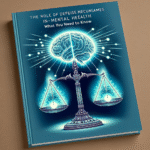
Building Bridges: Essential Communication Techniques for Couples
Introduction
In any relationship, the foundation is built on communication. It’s the means through which we express love, resolve conflicts, and understand one another. Yet, many couples struggle with this critical skill, leading to misunderstandings, resentment, and emotional distance. Imagine if you had a roadmap to better communication—to truly connect with your partner and build a bridge that spans even the deepest chasms of disagreement. This guide, "Building Bridges: Effective Communication Techniques for Couples," aims not only to furnish you with proven techniques but to inspire you to foster a deeper understanding with your partner.
The Importance of Communication in Relationships
According to a survey by the American Association of Marriage and Family Therapists, effective communication ranks as the top contributor to relationship satisfaction. When couples communicate well, they are better equipped to handle struggles, celebrate triumphs, and nurture their bond. This bare-bones truth showcases just how essential communication is; it can turn a struggling relationship into a thriving partnership, forging an emotional connection that withstands the test of time.
Understanding the Barriers to Effective Communication
Before we embark on the journey of Building Bridges: Effective Communication Techniques for Couples, it’s crucial to identify the common obstacles that couples face.
1. Emotional Baggage
Past traumas and unresolved issues can cloud present conversations. When partners carry emotional weight from previous relationships or their upbringing, it can create barriers to clear communication.
2. Different Communication Styles
Every individual expresses themselves uniquely. Some may be blunt, while others prefer a delicate approach. Understanding these styles is key in achieving effective communication.
3. Fear of Vulnerability
Opening up about feelings, insecurities, and fears can be daunting. This fear may lead one or both partners to withdraw, stifling honest dialogue.
4. Distractions
In this digital age, the presence of phones, television, and social media can severely disrupt meaningful conversations. Quality interaction requires focused attention.
Techniques for Effective Communication
Having established the potential roadblocks to effective communication, let’s delve into Building Bridges: Effective Communication Techniques for Couples. These strategies are designed to help you and your partner communicate more openly, honestly, and effectively.
1. Active Listening
What is Active Listening?
Active listening is more than just hearing words; it involves comprehending and engaging with what your partner is saying. Techniques include:
- Maintain Eye Contact: Show that you’re focused and present.
- Use Non-Verbal Cues: Nod or provide verbal affirmations to indicate understanding.
- Paraphrase: Repeat back what you’ve heard to demonstrate you understand.
Case Study: The Martinez Couple
Maria and Juan had been married for five years but often found themselves arguing over trivial matters. In therapy, they learned to practice active listening. This technique transformed their communication. Once, during a heated discussion over financial issues, Juan paraphrased Maria’s concerns, “So you feel worried about our spending habits?” This simple act of listening diffused the tension and opened the door for a productive conversation.
Analysis: This example shows the effectiveness of active listening as a conduit for understanding and demonstrates its potential to resolve conflicts.
2. Using "I" Statements
"I" statements help minimize blame and encourage personal responsibility. For example, instead of saying, “You never help with the chores,” try, “I feel overwhelmed when I have to handle all the chores alone.”
Benefits of "I" Statements
- Less Defensive Reaction: Your partner is less likely to feel attacked, fostering an atmosphere of collaboration.
- Encourages Introspection: It promotes introspection about one’s feelings and needs.
3. Establishing a Regular Check-In
Set aside time each week to discuss feelings, concerns, and joys. Use this as an opportunity to express gratitude and address any underlying issues before they escalate.
Case Study: The Johnsons’ Weekly Check-In
Karen and Mark introduced a Saturday morning check-in ritual. This allowed them to discuss their week and any grievances gently. By creating this dedicated time, they unearthed feelings that had gone unspoken, leading to a stronger connection.
Analysis: The Johnsons’ case illustrates how dedicated communication time can address concerns before they explode into major conflicts.
4. Practicing Empathy
Empathy—putting yourself in your partner’s shoes—facilitates deeper understanding. Ask questions that uncover their feelings and perspectives.
Benefits of Empathy
- Fosters Connection: Knowing you understand your partner’s emotions creates a bond of trust.
- Encourages Vulnerability: When you practice empathy, your partner feels safe to share their own vulnerabilities.
5. Navigating Conflict Calmly
Emotionally charged situations often lead to poor communication. Incorporate techniques to remain calm, such as:
- Taking Breaks: If emotions flare, agree to take a break for an hour and reconvene.
- Utilizing Humor: Light-heartedness can ease tension and foster a more relaxed atmosphere.
6. Non-Verbal Communication Awareness
Communication extends beyond spoken words. Be aware of your body language, tone, and gestures, which can significantly impact your message.
Example Table: Verbal vs. Non-Verbal Communication
| Communication Method | Description | Impact |
|---|---|---|
| Verbal | Spoken words and phrases | Direct but can be misunderstood |
| Non-Verbal | Body language, tone, facial expression | Can reinforce or contradict verbal messages |
Common Challenges in Communication
1. Contradictory Messages
When verbal and non-verbal signals clash, your partner may feel confused. Always strive for alignment in your spoken words and body language.
2. Overgeneralizing
Avoid using phrases like “You always” or “You never.” Such statements can seem accusatory and are often untrue.
3. Keeping Score
Focusing on past grievances leads to resentment. Instead of bringing up old issues, focus on finding solutions for current problems.
Conclusion
Building effective communication bridges between you and your partner is not an overnight journey; it requires commitment, patience, and practice. By implementing the techniques discussed in this guide, such as active listening, empathetic engagement, and dedicated check-ins, you can transform your relationship from one fraught with misunderstandings to one filled with harmony and joy.
Remember, communication is an evolving art that needs continual nurturing. As you invest time and energy into mastering these Building Bridges: Effective Communication Techniques for Couples, you’ll discover that it enriches not only your relationship but also your individual journeys.
FAQs Section
1. Why is communication in a relationship important?
Communication is critical as it fosters understanding, resolves conflicts, and enhances intimacy. Effective communication contributes significantly to relationship satisfaction.
2. What if my partner is unresponsive to my communication efforts?
If your partner is unresponsive, it may be helpful to ask them directly about their feelings. This could lead to a deeper understanding and may encourage them to participate more actively.
3. How do I improve my listening skills?
Improving listening skills involves practicing active listening techniques such as maintaining eye contact, paraphrasing, and providing feedback.
4. Are there specific communication techniques for disagreements?
Yes, techniques like maintaining calmness, using "I" statements, and taking breaks can help manage conflicts effectively.
5. Can professional help be beneficial for communication issues?
Absolutely. Professional therapists or counselors can provide personalized guidance and teach tailored strategies that help couples communicate more effectively.
By embracing the Building Bridges: Effective Communication Techniques for Couples outlined here, you set the stage for a more rewarding partnership that thrives on understanding, respect, and love. Building bridges requires effort and commitment from both sides, but the rewards—a deeper emotional connection and mutual happiness—are well worth the journey.


















